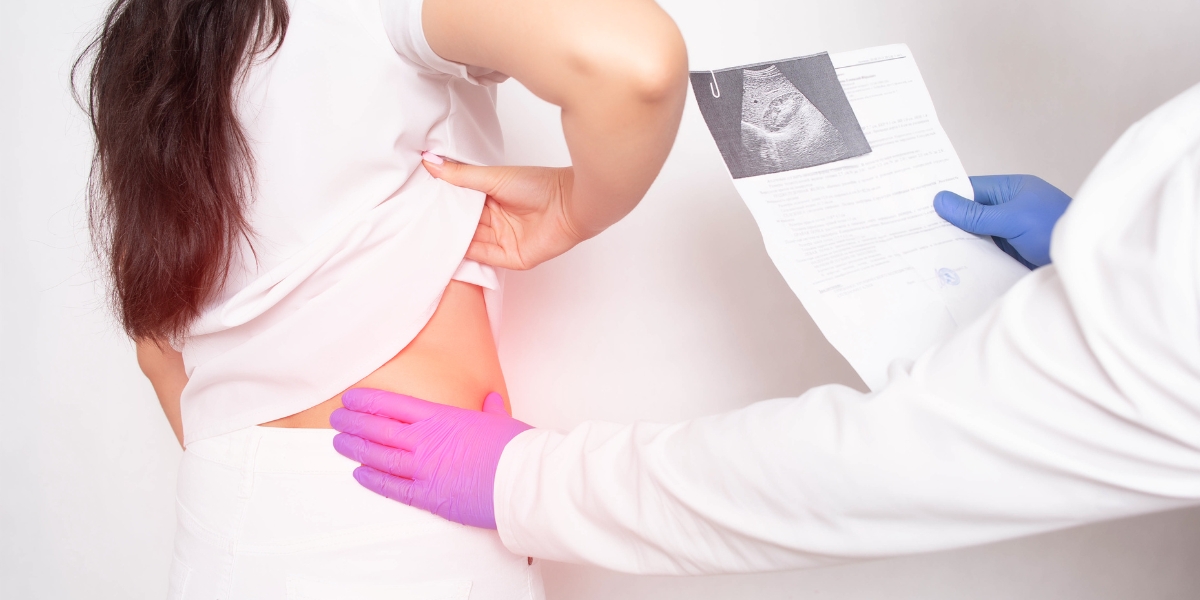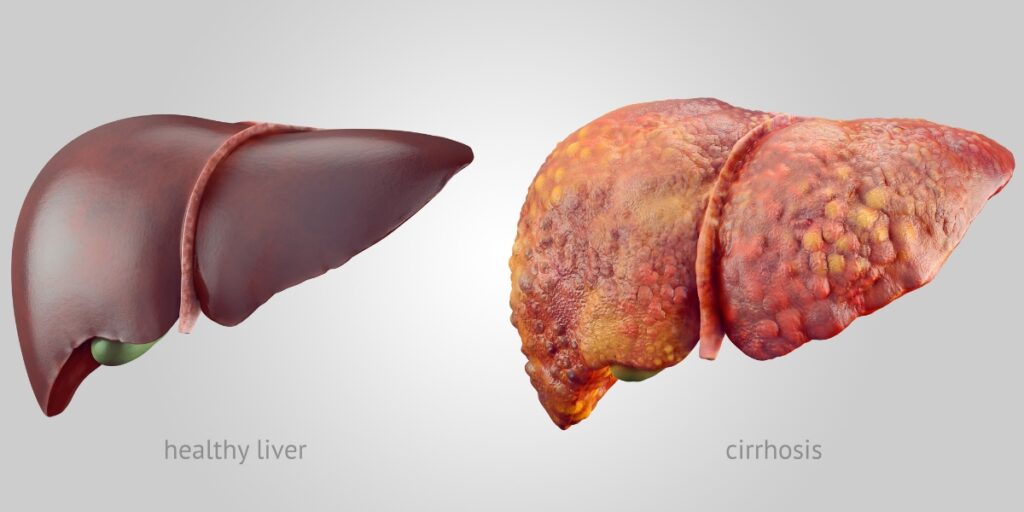Signs of Liver Damage from Alcohol


In the United States, alcohol is the leading cause of liver damage and diseases. The liver sustains the heaviest and earliest injuries and complications from alcohol consumption but is one of the last organs to show outward symptoms.
Often the first signs of liver damage from alcohol are subtle and overlooked, which is why it is vital to ask your doctor for liver function tests along with other regular health screenings. Unless you are honest about your drinking habits and alcohol intake, many doctors will not know to screen for alcohol-related liver disease, sometimes called alcohol-induced liver disease. Of the fatal cases of liver cirrhosis, almost half of them were alcohol-related.
According to the National Institute of Health (NIH), there are no specific amounts of alcohol you consume or length of time spent regularly drinking that directly determines who will contract or the severity of the liver disease. People who drink heavily, people who partake in occasional binge drinking, and even recreational drinkers are all equally at risk of developing alcohol-related liver disease. While all drinking increases the risk of liver damage, people may have conditions that increase the likelihood they will experience more liver damage than someone without the same factors.
Some known risk factors that can help predict who has a higher chance of alcoholic liver disease include:
- Genetics – While addiction is not genetic, how people process alcohol can be. Some people are born with fewer enzymes that the liver breaks down toxins with and uses to metabolize alcohol, causing more strain on the liver. Others are predisposed to non-alcohol-related liver diseases that are complicated by drinking.
- Weight – Fatty liver deposits are one of the early symptoms of alcoholic liver disease. People who are overweight already have excess fat deposits in their livers, making it easier for more to accumulate as liver damage from alcohol progresses.
- Diet and Nutrition – People with substance use disorders are often underweight and malnourished, either from loss of appetite or how heavy drinking affects the body’s ability to absorb nutrients. Some foods help prevent free radicals or molecules that cause damage to cells and organs, like the chemicals that come from the liver breaking down alcohol. When free radicals aren’t absorbed and appropriately eliminated, they can progress to disease and cancer.
- Smoking – Studies show that people who smoke cigarettes experience higher rates of alcohol-induced liver disease.
- Gender – Women develop alcoholic liver diseases at lower consumption levels and over shorter periods than men. Scientists believe this is due to the differences in metabolism and body fat distribution.
- Co-occurring liver diseases – Pre-existing medical conditions that affect the liver, mainly hepatitis, accelerate liver damage from alcohol.
- Other medications or drug use – Specific prescription, over-the-counter pain relievers, and illicit drugs like heroin cause immense liver strain. Combining them with alcohol, sometimes called polysubstance use, increases the amount of damage to the liver.
The liver is the only internal organ that can regenerate over time. If doctors detect liver diseases in the early stages and a person takes appropriate steps to stop drinking and take charge of their health, it can be reversible. The only 100% effective treatment is to stop drinking alcohol.

What Does Alcohol Do to the Liver?
To understand what alcohol does to the liver, you need to understand the liver’s role in the body. When the liver works correctly, it serves as a filter that processes and removes toxins, helps the body process nutrients, and is vital to the immune system. The liver breaks down alcohol at roughly one standard drink per hour.
The National Institute on Alcohol Abuse and Alcoholism (NIAAA) defines a standard drink as 12oz of beer, 5 oz of wine, or 1.5oz of hard liquor. While the liver processes alcohol, it releases a hepatotoxin chemical that damages the liver. The more alcohol that is processed, the more damage there is, and that damage leads to scarring and disfigures the liver. As liver damage from alcohol accumulates, it struggles to perform necessary functions, causing a domino effect of injury and strain on the rest of the body.

The Three Stages and Signs of Liver Damage From Alcohol
The most notorious three signs of liver damage from alcohol are jaundice, fluid accumulation in the abdomen, and extreme weight loss. These are all signs of advanced liver disease; a lot can happen between drinking heavily and full-blown liver failure.
The signs of liver damage from alcohol vary based on which of the three main stages a person has progressed to. Medical professionals classify alcohol-related liver disease (ARLD) into three severity categories for diagnostic and treatment purposes, although the symptoms can overlap. The three levels of liver damage are alcoholic fatty liver disease and alcoholic hepatitis, and alcoholic cirrhosis is the final stage of liver disease. Below are the three stages of liver disease progression and their symptoms.
1. Alcoholic Fatty Liver Disease
Clinically named alcohol-related steatohepatitis but casually called alcoholic fatty liver disease, it is associated with heavy drinkers and binge drinking because it can happen quickly after one or two instances of heavy drinking or binge drinking.
There are very few noticeable symptoms of fatty liver, but they can include the following:
- Upper abdominal discomfort on the right side
- Inflammation of the liver
- Appetite loss
- Fatigue
- Weakness
The National Institute of Health (NIH) estimates that fatty liver disease is common enough to occur in up to 90% of problem drinkers. The best treatment is to stop drinking alcohol and make lifestyle changes; the damage can heal with time. Chronic fatty liver can lead to scarring and more severe liver disease.
2. Alcoholic Hepatitis
Alcoholic hepatitis is unrelated to other infectious strains of hepatitis. Heavy drinkers are the most likely to develop liver disease, but this stage has occurred in people after binge drinking. After repeated or long-term periods of inflammation, the liver cells die off, a process called fibrosis that leads to scarring. Cases can range from mild to severe, with symptoms escalating in proportion.
Symptoms of alcoholic hepatitis include:
- Fever
- Weight loss
- Nausea
- Vomiting
- High blood pressure
- Abdominal pain and tenderness
- Jaundice, yellowing of the eyes and skin
- Dark colored urine
- Black or clay-like bowel movements
- People bleed and bruise more easily
- Slow healing wounds
Without immediate action and treatment, severe cases of alcoholic hepatitis can be life-threatening, with a mortality rate of approximately 50%. The NIAAA estimates that 40% of people with alcoholic hepatitis who continue to drink will develop cirrhosis.
3. Alcoholic Cirrhosis
Alcoholic cirrhosis is the final and most severe stage of liver damage from alcohol. When the liver has too much scar tissue to function normally because of cirrhosis, the body diverts the blood flow to other, smaller blood vessels causing a condition called esophageal varices, which causes strained and enlarged veins. Esophageal varices are a symptom of cirrhosis and generally don’t show signs until they bleed or rupture.
Symptoms of alcoholic cirrhosis and esophageal varices include:
- Confusion
- Abdomen ascites, fluid accumulation in the abdomen
- Swollen legs, hands, and feet
- Red palms with white fingernails
- Club fingers
- Vomiting blood
- Intestinal bleeding
- Enlarged spleen
- Kidney failure
- Extreme jaundice
- Malnutrition
- Chronic fatigue
- Fainting
- Liver spots or discolored patches of skin
Liver function tests or a liver biopsy are needed to determine the severity of cirrhosis. People diagnosed with advanced alcoholic cirrhosis who do not stop drinking have less than a 50% chance of living five or more years. The survival rate for people who stop drinking and get maintenance treatment for cirrhosis is around 60%, but it can vary based on other health conditions.
In cases of advanced liver disease, ongoing management and a liver transplant may be the only options; however, doctors cannot perform liver transplantation for alcoholic patients that are still drinking.
For people struggling with alcohol use disorders, addiction treatment programs are necessary and often required by medical professionals to ensure their ability to stop drinking before being considered for organ transplants. Chronic drinkers cannot quit drinking cold turkey without risking alcohol withdrawal seizures and other potentially life-threatening complications. Generally, medically assisted detox will be the first part of any treatment plan to ensure a person’s safety during withdrawal.

Treatment for Alcoholism
At White Oak Recovery Center, we understand that quitting drinking is not simple for people struggling with alcoholism.
We offer compassionate, evidence-based treatment that meets you where you are in your journey and stands by you from the moment you enter our residential treatment facility. You will be surrounded by support, a sense of privacy, and calmness at every step of treatment, including onsite medical detox.
WORC’s licensed and experienced team works closely with you to develop a personalized treatment plan that addresses your unique needs and recovery goals using evidence-based therapies. Our holistic, whole-person approach treats the physical aspects of addiction and the underlying root causes to plant the seeds of healing that lead to a life rooted in recovery.
Reach out now to speak with our admissions team; we are eager to welcome you to a world of recovery and possibilities.

Am I covered for addiction treatment?
Your insurance may cover treatment. Call now for an entirely free and confidential assessment. Recovery starts with a phone call.

- “Alcoholic Liver Disease.” John Hopkins Medicine, Dec. 2022.
- “Overview: Alcohol-related Liver Disease.” National Health Services, Sept. 2022.
- “Alcohol-related Liver Disease.” University of Michigan Health, Oct. 2022.
- Maher, Jacquelyn. “Exploring Alcohol’s Effects on Liver Function.” The National Institute on Alcohol Abuse and Alcoholism, Jan. 1997.
- “Alcohol-related Liver Disease.” National Health Services Inform, Sept. 2022.
- Mann, Robert, et al. “The Epidemiology of Alcoholic Liver Disease.” The National Institute on Alcohol Abuse and Alcoholism, Mar. 2003.
- Torruellas, Cara, et al. “Diagnosis of Alcoholic Liver Disease.”World Journal of Gastroenterology : WJG, vol. 20, Sep. 2014.
- Patel, Roshan and Mueller, Matthew. “Alcoholic Liver Disease.” National Library of Medicine, Jan. 2022.
- Osna, Natalia, and Kharbanda, Kusum. “Alcoholic Liver Disease: Pathogenesis and Current Management.” Alcohol Research: Current Reviews, vol. 38, Feb. 2016.
- Basra, Gurjot, et al. “Symptoms and Signs of Acute Alcoholic Hepatitis.” World Journal of Hepatology vol. 3, May 2011.
Medical Disclaimer:







